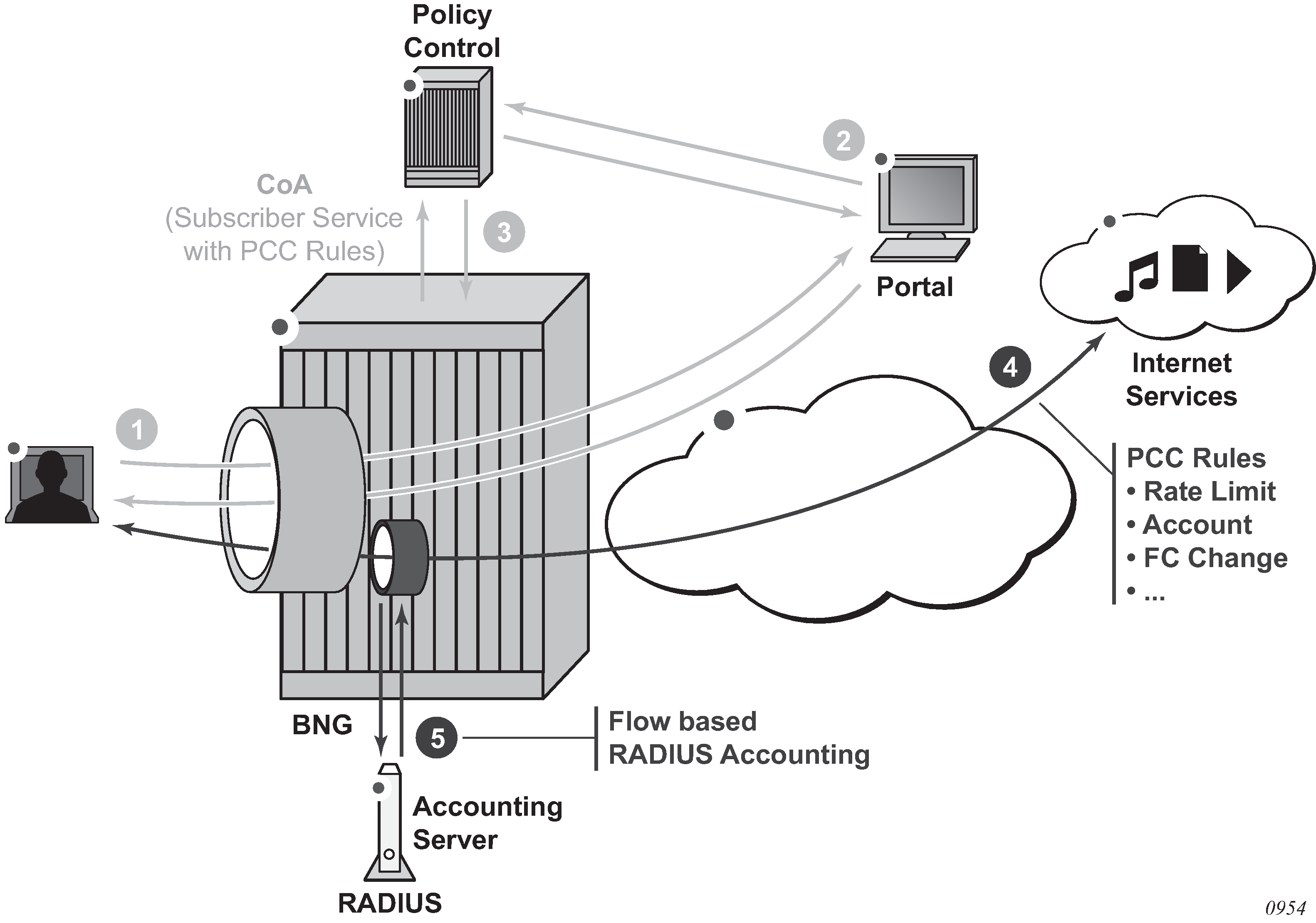Policy and Charging Control (PCC) rules are defined in the 3GPP PCC architecture and used in the Diameter Gx application as a collection of parameters that enable IP traffic flows to be identified, QoS parameters and filtering actions to be applied to these flows, and charging to be performed on them. The use of PCC rules in policy management by the Diameter Gx interface is described in the PCC Rules.
The same PCC rule construct is used in RADIUS subscriber services to enable IP flow-based actions and accounting.
Identify IP flows based on 5-tuple (protocol, source and destination IP address, source and destination port) and DSCP value.
Apply QoS actions to these flows, such as rate limiting or change of forwarding class.
Apply filter actions to these flows, such as forward, drop, HTTP redirect, redirect to a next hop or routing instance.
Enable RADIUS accounting to report the forwarded octets and packets of the IP flows.
IP flow-based accounting can be used for a subscriber service using PCC rules. Activated by a self-service portal or as part of an Internet subscription package, applications identified by a 5-tuple receive specific treatment, such as bandwidth increase, expedited forwarding, or zero rating. Volume and time statistics for the application data is available in the subscriber service RADIUS accounting session. This is shown in Figure: Example: PCC rule-based subscriber service.

The user subscribes to a service by a web portal.
The policy control is informed of the new subscription.
The policy control instructs the BNG by RADIUS to activate a subscriber service with PCC rules.
The subscriber service is instantiated on the BNG. A dynamic policer is spawned to optionally rate-limit or count the application traffic.
The subscriber service instance accounting session reports the volume of traffic forwarded as part of this service.